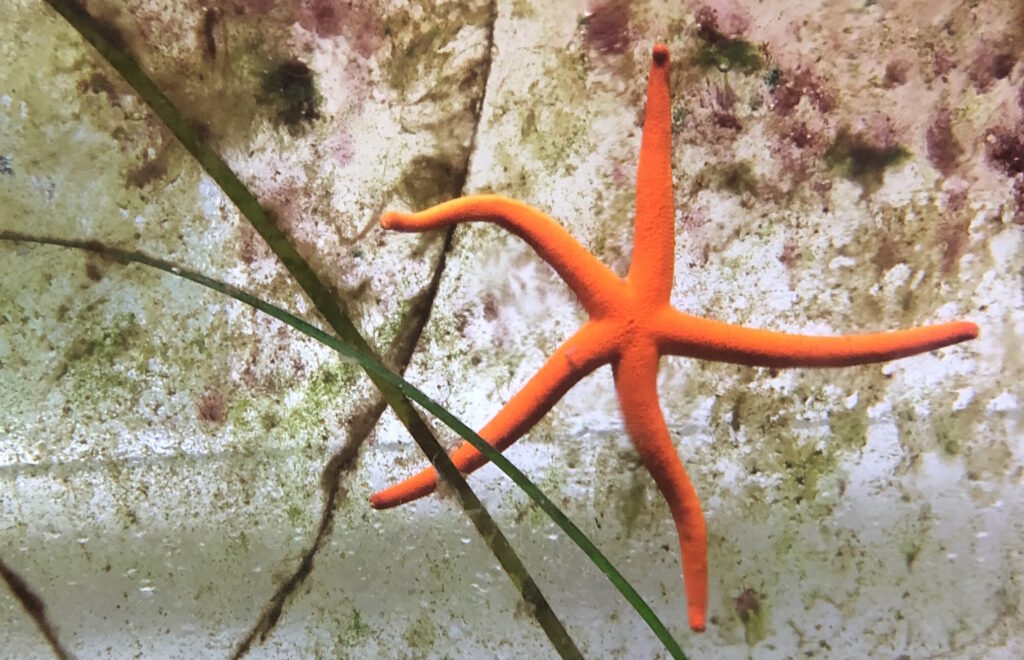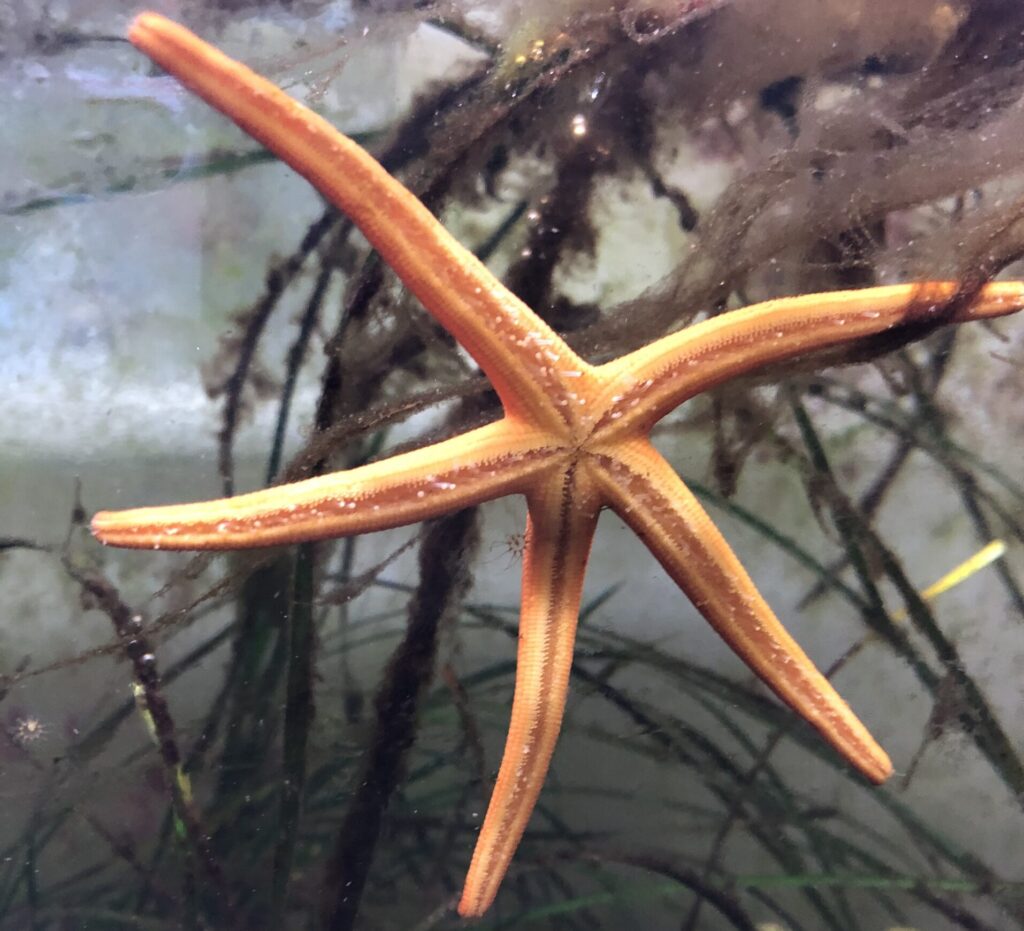Pacific Blood Star (Henricia leviuscula)

Pacific blood stars are one of the most easily identified sea stars in BC. They can grow up to 32 cm across and are easy to spot due to their vivid red/orange colouring. Pacific blood stars have long slender arms, called rays. Most commonly they are found with five rays, but can be found with four or six rays on occasion. If a ray is damaged or lost, Pacific blood stars will regrow their appendages as long as the central disk remains intact. The surface of a Pacific blood star is covered in small bumps and divots caused by ossicles in their tissues. Their bodies are very rigid and covered with papillae. They have small tube feet which fill narrow channels on the underside of their bodies.

Pacific blood stars are found in Siberia, Japan and from Northern Alaska to Northern Mexico. They are commonly found in the intertidal zone but can be found as deep as 400 m. They prefer areas with hard substrates such as rocks and shells. Pacific blood stars feed primarily on sponges and bryozoans, capturing particles in mucus, and moving them down ciliated tracts into their mouths. They can also absorb nutrients out of sea water through their skin.
Blood stars have separate sexes, though physiologically they are hard to distinguish. Reproductive strategy is not well studied but seems to be determined by the size of the female. Smaller females have often been observed brooding their eggs, whereas larger individuals release them into the water column. Their eggs are small (~1.3 mm), round and a bright yellow-orange colour. After the eggs hatch, the young develop into planktonic larva. Predators of Pacific blood stars are limited to birds and humans. Beachcombers are often drawn to the vibrant colours of blood stars, collecting them when the tide goes out.
To learn more check out our Seaquaria video about Sea Stars. The Pacific blood star, along with other sea star species are a common resident in our summer touch tanks!
For more information visit Biodiversity of the Central Coast and Sea Stars of the North Pacific.


